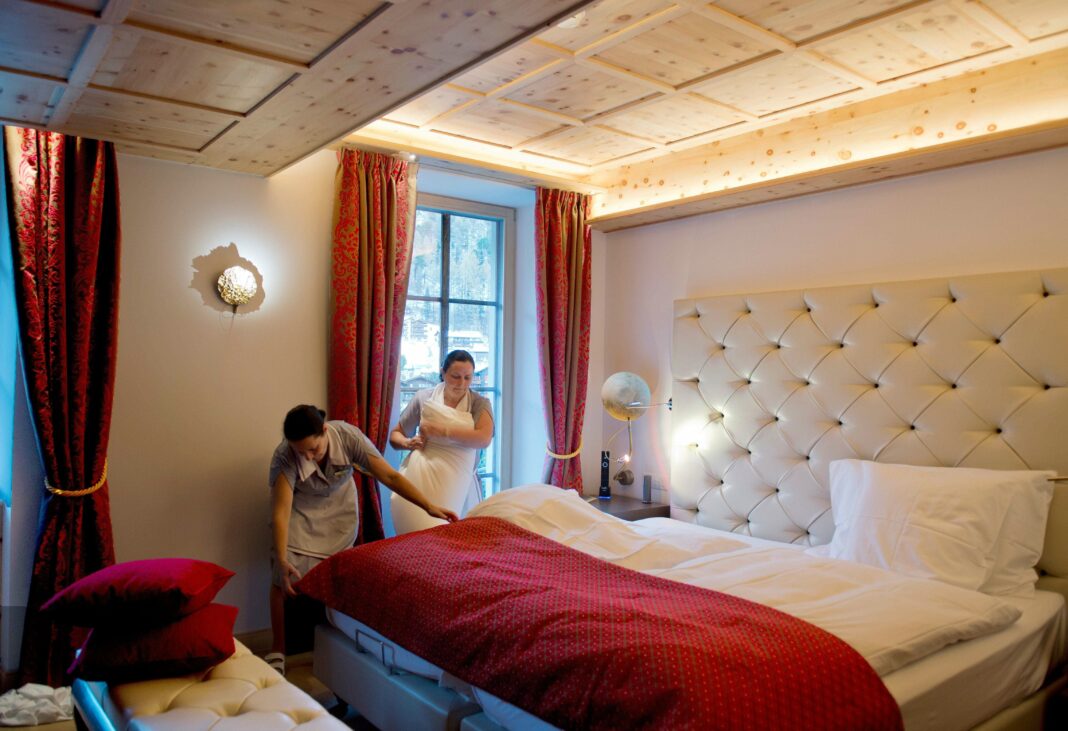Switzerland’s tourism is booming, with nearly 42 million overnight stays last year and increasing hotel supply. However, many hotels struggle with declining occupancy rates amid heightened competition. While popular destinations like Zermatt thrive, cities such as Zurich and Basel see lower occupancy despite a rise in available beds. The presence of international hotel chains is growing, but family-run establishments remain resilient. Upcoming events are expected to further boost the hospitality sector in select areas.
The Swiss Tourism Boom: A Double-Edged Sword
Switzerland’s tourism sector is experiencing an impressive surge. Last year, the country recorded nearly 42 million overnight stays, and projections indicate that this figure could be exceeded once again this year. With more visitors flocking to the Swiss landscape than ever before, one might expect a celebratory atmosphere among hoteliers.
However, the reality is more nuanced. Many hotels are facing challenges with declining occupancy rates, raising the question: how can a thriving tourism market coexist with struggling accommodations?
The Growth of Hotel Supply and Its Impact
An analysis of recent data reveals that Switzerland is not only witnessing a boom in tourism but also a significant increase in hotel accommodations. When comparing overnight stays from 2023 to those in 2019—the year before the pandemic—there has been a notable rise of 5.5 percent.
Simultaneously, hotel availability has seen considerable growth. In 2019, the total number of hotel beds in Switzerland was 275,249, but this figure has climbed to 288,457, marking a 5.4 percent increase. This surge equates to enough additional hotel beds to accommodate an entire small town.
For instance, the SV Group, widely recognized as a canteen operator, has expanded its presence in the hospitality sector by opening six new hotels across Switzerland since 2019. These new establishments—located in urban centers like Lausanne, Bern, and Geneva—are part of franchise agreements with major international brands like Marriott.
International hotel chains have been pivotal in driving the increase in hotel beds, especially in urban areas, according to the SV Group. While this influx of new hotels benefits Switzerland by attracting more visitors, it also intensifies competition for existing hotels.
In cities like Zurich, the number of hotel beds rose from 16,571 in 2019 to 17,833 by 2023, yet the bed occupancy rate decreased from 60 percent to 58.9 percent. A similar trend is observed in Basel, where the occupancy rate for the entire year of 2023 stood at just 43.9 percent, slightly down from 2019. Jonas Gass, director of the Hotel Krafft, highlights the rapid growth of hotel beds in Basel as a contributing factor to this decline.
Despite the overall increase in tourism, the growth in hotel supply has not necessarily translated into higher profits for all establishments. With many Swiss hotels operating seasonally, the average occupancy rate has dipped by 0.3 percentage points between 2019 and 2023.
Preliminary data for 2024 indicates that while a record number of tourists are visiting, less than half of all Swiss municipalities have seen an increase in hotel occupancy rates.
Nonetheless, not all regions are facing the same struggles. Popular tourist destinations that are less reliant on favorable weather conditions, such as Zermatt and Grindelwald, are thriving. Despite the influx of new beds, Grindelwald has witnessed a substantial rise in occupancy rates, achieving 71.5 percent in 2023—a notable increase of over 6 percentage points since 2019. This trend is creating new opportunities for local hoteliers, enabling them to maintain year-round operations and hire skilled employees.
As new hotel projects are set to emerge in Grindelwald, local business owners like Carole Hauser of Hotel Belvedere remain optimistic. Their ability to adapt quickly to market changes, in contrast to larger chains, positions them favorably in a competitive landscape. Collaboration among family-owned hotels also enhances their resilience against international competitors.
While Switzerland has long been characterized by family-run hotels, global chains have begun to carve out significant market shares. Despite only comprising 10 percent of the hotel industry, these chains account for 32 percent of the total bed supply. The consulting firm Horwath has noted this trend, suggesting that international investments will help uphold Switzerland’s high hospitality standards.
Furthermore, the anticipated influx of events such as the Women’s Football European Championship and the Eurovision Song Contest will provide a boost to the hotel market in places like Basel. As Gass points out, the availability of hotel beds played a crucial role in attracting these events, highlighting a silver lining in the evolving hospitality landscape.
